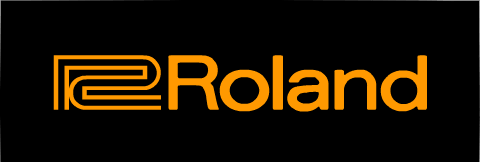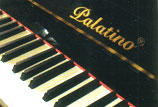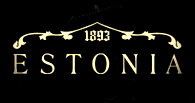Not since invention of the digital piano and computerized player piano systems in the late 80’s has the piano industry...and piano buyers...had something to get excited about. Hybrid pianos are here and it’s the latest buzzword in the piano world. If you’ve come here looking for hybrid piano ratings, I’m afraid that’s an impossible request for reasons that will be explained below. But if you’ve come here looking for information about what a hybrid piano is and how they differ from acoustic pianos and digital pianos, you have come to a page that will explain it in typical chicagopianos.com fashion – impartially, thoroughly and candidly!
What is a hybrid piano?
Hybrid pianos are part digital piano, part acoustic piano. To help you better understand this and why you might (or might not) want a hybrid piano, it would help to first define digital pianos and acoustic pianos:
Acoustic pianos in short are the traditional “wood and glue” instruments that have been around in some form for more than 300 years. They have heavy cast iron frames, strings, bridges, 9000 action parts, a soundboard...and don’t require electricity.
Digital pianos are the opposite. They have no strings, no heavy iron frame, a simplified key action, no soundboard and the sound is a computerized reproduction of an acoustic piano which you hear through speakers. They are lighter, don't go out of tune, offer headphone capabilities for privacy and yes, require electricity.
The rub on digital pianos over the years is that some teachers have either said “it just doesn’t sound like a real piano”...or “it just doesn’t feel like a real piano”...or sometimes both. The sound of a really good digital piano can best be described as “the sound of a concert grand piano as it is heard through speakers”.
In fact, we once did a test in our store to prove this point: we had a 9’ concert grand in our store placed next to a really good digital piano. We asked customers to turn around and close their eyes. We played the digital piano then the concert grand piano, asking customers to tell us which was which. No one ever got it wrong. Then, in a completely different part of our store, we had another 9’ concert grand with microphones placed inside. We used 150’ of cables to feed the sound all the way into the speaker system of that same digital piano used in the first test. We played the digital piano and the concert grand that was in a different part of our store and asked customers to tell us which was which. More people actually thought the digital sound was the acoustic sound. What this proves is that the a really good digital piano can sound as good or even better than an acoustic piano that is properly mic'ed and heard through speaker cones. But no digital piano is capable of reproducing the three-dimensional sound of a real acoustic piano.
Digital pianos have become as popular and in some areas even more popular than acoustic pianos. For more on whether a digital piano or acoustic piano is right for you, we have a page dedicated to that very topic right here. With the popularity of digital pianos in recent years, the road has been paved for instruments that blur the line between digital and acoustic, catering to customers who enjoy some of the features that each has to offer.
There are four distinctly different types of hybrid pianos that are currently being offered. Several manufacturers are in the hybrid piano game now and the lines are actually getting blurred in different ways. Here are the different types of hybrid pianos, and you’ll find that these very much cater to different types of buyers:
1. Digital pianos with acoustic wood key actions – This is the hybrid piano type that has popularized the product category into being a real thing. These hybrid pianos have no strings but they have a complicated wood key action that closely resembles that which is in acoustic pianos. They have many or most of the moving parts of an acoustic piano action. This also means you will have some additional maintenance expense over the years, regulating those actions parts but that it typically not a big deterrent to people who have the need for this type of piano. Some models have simulated upright piano actions contained inside the hybrid piano cabinet; some have simulated grand piano actions.
Who buys it? Pianists who like the features of digital pianos but never thought the action of digital pianos was authentic enough; schools and churches who can benefit from the instrument always being in tune and the authenticity of the action; pianists whose home or apartment has too many stairs to move an acoustic piano in and out.
2. Digital pianos with real acoustic soundboards – As Monty Python used to say, “And now for something completely different”. Take a digital piano with the most advanced, simulated grand piano action and put a soundboard in it. Now take the sampled sound of a 9’ concert grand and feed it directly into that soundboard via a transducer – a magnetic, coneless “speaker” that performs the same function as a bridge that transmits the sound of strings into the soundboard of an acoustic piano. Talk about blurring the lines! And now here’s why there has been the need to have the lines blurred: The biggest reason why people can usually tell the difference between the sound of an acoustic and a digital piano is because the sound of an acoustic piano is three dimensional. It comes from a soundboard that is several feet in diameter. Traditional grand pianos have the additional benefit of the sound coming from the top, the bottom, the front, back and sides. The sound of a digital piano however, comes from a couple of paper cones we call speakers that are usually 6” or so in diameter. That’s not much of a level playing field.
So better digital pianos attempt to sound more authentic by having more speakers, with manufacturers investing heavily in research & design to improve upon the sound – coming up with new stereo imaging techniques, speaker configurations and placement...all in an attempt to reproduce the properties of an acoustic piano’s soundboard.
“Um, then why don’t we just try putting a soundboard in a digital piano?” Someone had to say that in a board room somewhere in Japan because it happened, it worked and it has become a very popular type of hybrid piano for the discerning buyer. By using transducers and a real soundboard to amplify a sampled piano sound, pianists can now enjoy the warmth and extended dynamic qualities of an acoustic piano without the electronic sound qualities that have plagued digital pianos
Who buys it? Schools and churches who want the durability of a digital piano but want the most authentic sound possible without having the maintenance of an acoustic piano; pianists who want the most authentic sound possible without having to buy an acoustic piano. Families who have the need to buy a digital piano (maybe due to limited space, adverse climate conditions like a basement, the need for headphone capability, the desire for some of the features) but want the most authentic sound possible.
3. Acoustic pianos with headphone and recording capabilities – This is actually the oldest type of hybrid piano, dating back to the 90’s – long before the genre was even given a name. These are pianos that if you remove all the electronic elements, you still have a standard, traditional “wood and glue” acoustic piano. The Kawai models are called “AnyTime Pianos”. The electronic components added into the piano allow you to press the middle pedal, locking it in the down position, which engages a rail into position that stops the hammers just short of striking the strings when the keys are pressed. This feature silences the piano from making any noise when played. Then, as you’re playing the piano, sensors under each key and pedal send your whole performance to headphones in real time, using the sampled sounds of a 9’ concert grand...or a harpsichord...or a pan flute… or any of the army of sounds stored in memory.
Who buys it? People or families who want a “real piano” but value the ability to play with headphones; pianists who want a “real piano” but have neighbors and can’t always play out loud; pianists who want a “real piano” and want to digitally record what they’re playing to a USB storage device. These are among the more expensive hybrids since you’re paying for both an acoustic piano AND a digital piano.
4. Acoustic pianos with transducers – This is a hybrid product with the most focused customer base. These are real acoustic “wood and glue” pianos that also have transducers fastened onto the soundboard, identical to those used in the second type of hybrid piano described above. These transducers take any of the onboard sounds (piano, organ, harpsichord, strings…) and feed them directly into the piano’s soundboard instead of feeding them into speakers.
If you’re truly following along at home, you might be thinking, “What is the point of having transducers on a soundboard if it is already an acoustic piano?” Here are a couple reasons:
- The blended sound of the acoustic piano with the sampled piano is amazing! This is particularly advantageous where the piano is an upright (not a grand) because the quality an upright piano’s sound is limited (by string length, enclosed cabinet, etc). But when you add in some volume of a 9’ concert grand piano sample that is being piped into the actual soundboard, you have something that pianists fall in love with. It truly has to be heard!
- You can now play out loud...at all dynamic levels...but quietly. So let’s say you’re an advanced player and you want to practice your Rachmaninoff but you don’t want to play with headphones and you don’t want to blow away your neighbors. With this piano (Kawai K-300 ATX-SS) you can silence the sound of the acoustic piano completely (the same way as described in #3) and hear the sound of a 9’ concert grand piano amplified only by the piano’s soundboard, at whatever volume you wish.
- You can play the acoustic piano and blend in other sounds such as orchestral strings through the soundboard while you play. This produces a very beautiful and surprisingly versatile sound.
Who buys it? Advanced pianists who want the authenticity of an acoustic piano but have the need for silencing capabilities...and aren't afraid to spend a little more money to get some state of the art features that can enhance the sound of their performances in unique ways.
Cordogan’s stock a full range of hybrid pianos so please contact us for more information or come out and try the different models!










